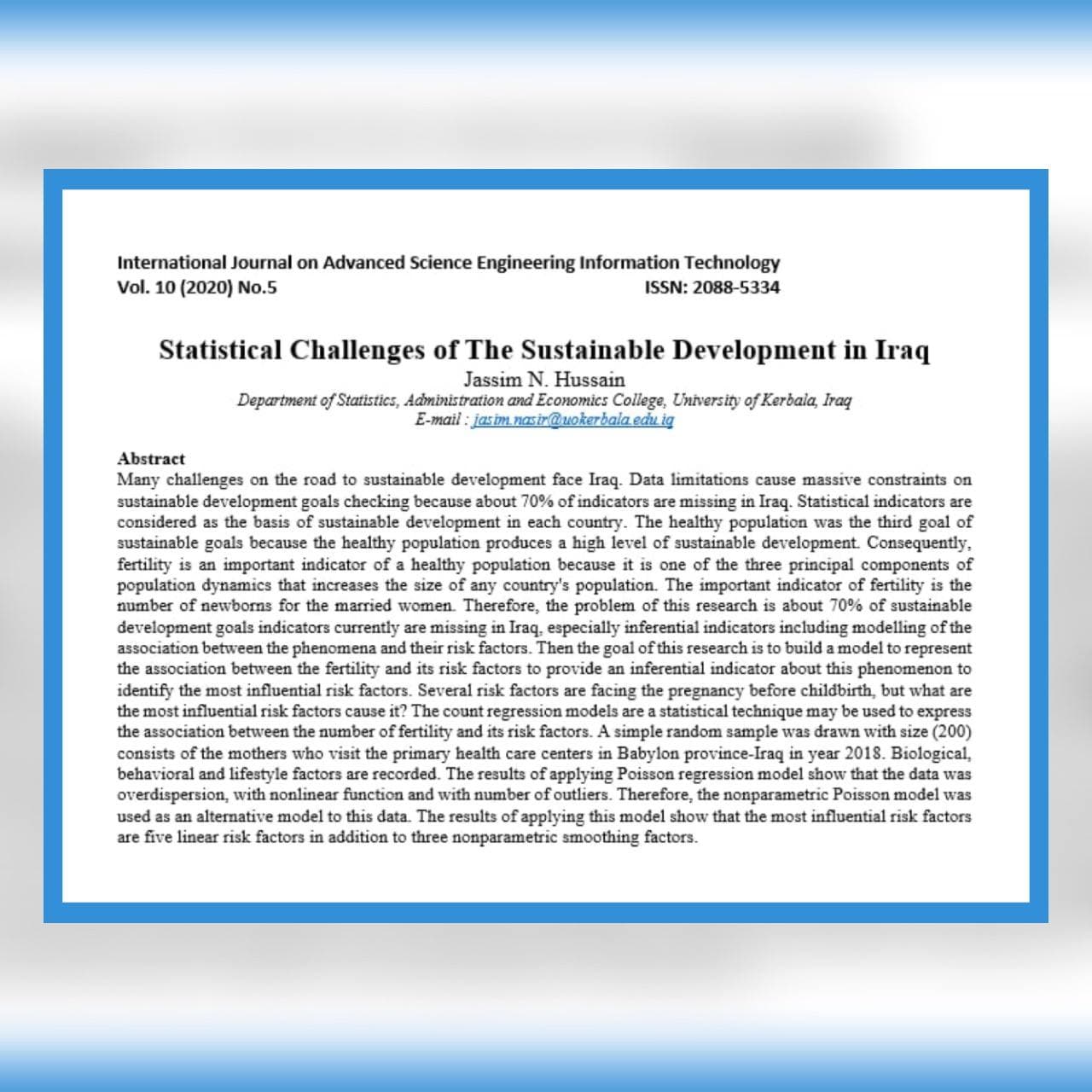International Journal on Advanced Science Engineering Information Technology Vol. 10 (2020) No.5 ISSN: 2088-5334
Statistical Challenges of The Sustainable Development in Iraq
Jassim N. Hussain
Department of Statistics, Administration and Economics College, University of Kerbala, Iraq
E-mail : jasim.nasir@uokerbala.edu.iq
Abstract
Many challenges on the road to sustainable development face Iraq. Data limitations cause massive constraints on
sustainable development goals checking because about 70% of indicators are missing in Iraq. Statistical indicators are considered as the basis of sustainable development in each country. The healthy population was the third goal of sustainable goals because the healthy population produces a high level of sustainable development. Consequently, fertility is an important indicator of a healthy population because it is one of the three principal components of population dynamics that increases the size of any country’s population. The important indicator of fertility is the number of newborns for the married women. Therefore, the problem of this research is about 70% of sustainable development goals indicators currently are missing in Iraq, especially inferential indicators including modelling of the association between the phenomena and their risk factors. Then the goal of this research is to build a model to represent the association between the fertility and its risk factors to provide an inferential indicator about this phenomenon to identify the most influential risk factors. Several risk factors are facing the pregnancy before childbirth, but what are the most influential risk factors cause it? The count regression models are a statistical technique may be used to express the association between the number of fertility and its risk factors. A simple random sample was drawn with size (200) consists of the mothers who visit the primary health care centers in Babylon province-Iraq in year 2018. Biological, behavioral and lifestyle factors are recorded. The results of applying Poisson regression model show that the data was over dispersion, with nonlinear function and with number of outliers. Therefore, the non parametric Poisson model was used as an alternative model to this data. The results of applying this model show that the most influential risk factors are five linear risk factors in addition to three non parametric smoothing factors.































































